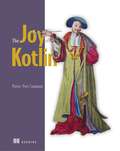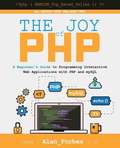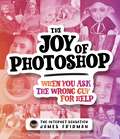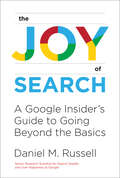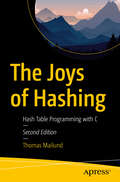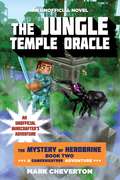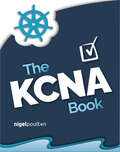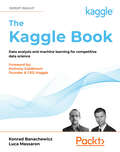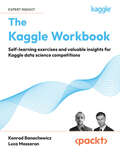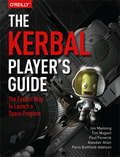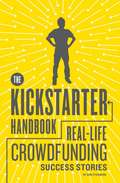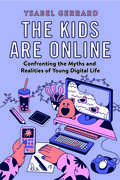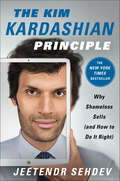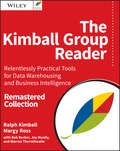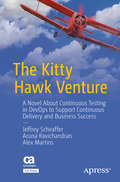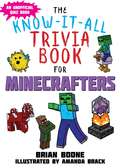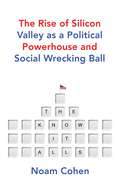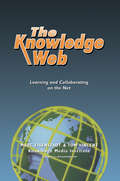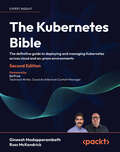- Table View
- List View
The Joy of Kotlin
by Pierre-Yves SaumontSummaryMaintaining poor legacy code, interpreting cryptic comments, and writing the same boilerplate over and over can suck the joy out of your life as a Java developer. Fear not! There's hope! Kotlin is an elegant JVM language with modern features and easy integration with Java. The Joy of Kotlin teaches you practical techniques to improve abstraction and design, to write comprehensible code, and to build maintainable bug-free applications.Purchase of the print book includes a free eBook in PDF, Kindle, and ePub formats from Manning Publications.About the TechnologyYour programming language should be expressive, safe, flexible, and intuitive, and Kotlin checks all the boxes! This elegant JVM language integrates seamlessly with Java, and makes it a breeze to switch between OO and functional styles of programming. It's also fully supported by Google as a first-class Android language. Master the powerful techniques in this unique book, and you'll be able to take on new challenges with increased confidence and skill.About the BookThe Joy of Kotlin teaches you to write comprehensible, easy-to-maintain, safe programs with Kotlin. In this expert guide, seasoned engineer Pierre-Yves Saumont teaches you to approach common programming challenges with a fresh, FP-inspired perspective. As you work through the many examples, you'll dive deep into handling errors and data properly, managing state, and taking advantage of laziness. The author's down-to-earth examples and experience-driven insights will make you a better—and more joyful—developer!What's insideProgramming with functionsDealing with optional dataSafe handling of errors and exceptionsHandling and sharing state mutationAbout the ReaderWritten for intermediate Java or Kotlin developers.About the AuthorPierre-Yves Saumont is a senior software engineer at Alcatel-Submarine Networks. He's the author of Functional Programming in Java (Manning, 2017).Table of ContentsMaking programs saferFunctional programming in Kotlin: An overviewProgramming with functionsRecursion, corecursion, and memoizationData handling with listsDealing with optional dataHandling errors and exceptionsAdvanced list handlingWorking with lazinessMore data handling with treesSolving problems with advanced treesFunctional input/outputSharing mutable states with actorsSolving common problems functionally
The Joy of PHP: A Beginner's Guide To Programming Interactive Web Applications With PHP And MySQL
by Alan ForbesThird Edition now with bonus chapters. Have you ever wanted to design your own website or browser application but thought it would be too difficult or just didn't know where to start? Have you found the amount of information on the Internet either too daunting or not geared for your skill set or worse-- just plain boring? Are you interested in learning to program PHP and have some fun along the way? If so, then The Joy of PHP by Alan Forbes is the book for you!! Alan starts with some basic HTML so the absolute beginner can catch up quickly and then goes step by step on how PHP works.
The Joy of Photoshop: When You Ask The Wrong Guy For Help
by James FridmanThe Joy of Photoshop is the long-awaited book from the social media sensation James Fridman.Have you ever taken a seemingly perfect picture only to have it ruined by one tiny detail? Photoshop master James Fridman is only too happy to help, even if he sometimes takes requests a little too literally.The Joy of Photoshop contains James's best-loved and funniest image alterations. From the woman who wished to look like a mermaid, to super-fans who want to be edited into their favourite movies, his followers never get quite what they asked for. Including plenty of never-before-seen pictures, this meme-tastic book will have you in stitches!
The Joy of Photoshop: When You Ask The Wrong Guy For Help
by James FridmanThe Joy of Photoshop is the long-awaited book from the social media sensation James Fridman.Have you ever taken a seemingly perfect picture only to have it ruined by one tiny detail? Photoshop master James Fridman is only too happy to help, even if he sometimes takes requests a little too literally.The Joy of Photoshop contains James's best-loved and funniest image alterations. From the woman who wished to look like a mermaid, to super-fans who want to be edited into their favourite movies, his followers never get quite what they asked for. Including plenty of never-before-seen pictures, this meme-tastic book will have you in stitches!
The Joy of Search: A Google Insider's Guide to Going Beyond the Basics (The\mit Press Ser.)
by Daniel M. RussellHow to be a great online searcher, demonstrated with step-by-step searches for answers to a series of intriguing questions (for example, “Is that plant poisonous?”).We all know how to look up something online by typing words into a search engine. We do this so often that we have made the most famous search engine a verb: we Google it—“Japan population” or “Nobel Peace Prize” or “poison ivy” or whatever we want to know. But knowing how to Google something doesn't make us search experts; there's much more we can do to access the massive collective knowledge available online. In The Joy of Search, Daniel Russell shows us how to be great online researchers. We don't have to be computer geeks or a scholar searching out obscure facts; we just need to know some basic methods. Russell demonstrates these methods with step-by-step searches for answers to a series of intriguing questions—from “what is the wrong side of a towel?” to “what is the most likely way you will die?” Along the way, readers will discover essential tools for effective online searches—and learn some fascinating facts and interesting stories. Russell explains how to frame search queries so they will yield information and describes the best ways to use such resources as Google Earth, Google Scholar, Wikipedia, and Wikimedia. He shows when to put search terms in double quotes, how to use the operator (*), why metadata is important, and how to triangulate information from multiple sources. By the end of this engaging journey of discovering, readers will have the definitive answer to why the best online searches involve more than typing a few words into Google.
The Joys of Hashing: Hash Table Programming with C
by Thomas MailundBuild working implementations of hash tables, written in the C programming language. This book starts with simple first attempts devoid of collision resolution strategies, and moves through improvements and extensions illustrating different design ideas and approaches, followed by experiments to validate the choices. Hash tables, when implemented and used appropriately, are exceptionally efficient data structures for representing sets and lookup tables, providing low overhead, constant time, insertion, deletion, and lookup operations. The Joys of Hashing walks you through the implementation of efficient hash tables and the pros and cons of different design choices when building tables. The source code used in the book is available on GitHub for your re-use and experiments.What You Will LearnMaster the basic ideas behind hash tablesCarry out collision resolution, including strategies for handling collisions and their consequences for performanceResize or grow and shrink tables as neededStore values by handling when values must be stored with keys to make general sets and mapsWho This Book Is ForThose with at least some prior programming experience, especially in C programming.
The Joys of Hashing: Hash Table Programming with C
by Thomas MailundBuild working implementations of hash tables, written in the C programming language. The new and revised Second Edition has been enhanced with simplified code and more comprehensive explanations, aimed at improving clarity and comprehension while exploiting the latest features in C programming. This book starts with simple first attempts devoid of collision resolution strategies. It then progresses through improvements and extensions illustrating different design ideas and approaches, followed by experiments to validate the choices. You will learn how hash tables, when implemented and used appropriately, are exceptionally efficient data structures for representing sets and lookup tables, providing low overhead, constant time, insertion, deletion, and lookup operations. The Joys of Hashing walks you through the implementation of efficient hash tables and the pros and cons of different design choices when building tables. The source code used in the book is available on GitHub for your re-use and experiments. What You Will Learn Master the basic ideas behind hash tables Carry out collision resolution, including strategies for handling collisions and their consequences for performance Resize or grow and shrink tables as needed Store values by handling when values must be stored with keys to make general sets and maps Who This Book Is For Those with at least some prior programming experience, especially in C programming.
The Jungle Temple Oracle: The Mystery of Herobrine: Book Two: A Gameknight999 Adventure: An Unofficial Minecrafter's Adventure (The\mystery Of Herobrine Ser. #Bk. 2)
by Mark ChevertonAn ancient jungle temple holds the secrets to stopping the evil Herobrine! Gameknight999’s true enemy has finally surfaced: Herobrine, an artificially intelligent virus that wants to escape Minecraft and destroy mankind with their own creation--the Internet. If he is able to escape the game and get online, Herobrine will infect millions of computer systems and turn machines and weapons on their masters, threatening all of humanity. After facing Herobrine in battle and nearly dying, Gameknight realizes he’s going to need much more help to defeat this seemingly invincible enemy. His NPC friends tell him of the ancient Oracle residing in the oldest jungle temple in Minecraft who knows the secret to defeating this terrible threat. The path to the temple is fraught with danger, with zombies, spiders, and creepers lying in wait behind every tree and bush. Gameknight will enlist the help of his friends on his quest, but will they reach the Oracle in time to stop Herobrine? Gameknight999 will be tested to his limits, and perhaps beyond, in this spine-tingling new adventure.
The KCNA Book: Pass the Kubernetes and Cloud Native Associate exam in style
by Nigel PoultonBoost your knowledge with the well-organized revision guide for Kubernetes and Cloud Native Associate (KCNA) certification and exam. Expand your horizon of possibilities with extensive explanations and quizzesKey FeaturesLearn new technologies and revise concepts to master the KCNA certification and examReinforce and test knowledge through practice questions and an examBoost your career by leveraging Kubernetes and cloud-native technologiesBook DescriptionThere is a huge benefit in building small, specialized, single-purpose apps that can self-heal, auto scale, and update regularly without needing downtime. Kubernetes and cloud-native technologies come in handy in building such apps. Possessing the knowledge and skills to leverage Kubernetes can positively enhance possibilities in favor of architects who specialize in cloud-native microservices applications. ‘The KCNA Book’ is designed to help those working in technology with a passion to become certified in the Kubernetes and Cloud-Native Associate Exam. You will learn about containerization, microservices, and cloud-native architecture. You will learn about Kubernetes fundamentals and container orchestration. The book also sheds light on cloud-native application delivery and observability. It focuses on the KCNA exam domains and competencies, which can be applied to the sample test included in the book. Put your knowledge to the test and enhance your skills with the all-encompassing topic coverage. Upon completion, you will begin your journey to get the best roles, projects, and organizations with this exam-oriented book.What you will learnLearn the essentials of containerization and microservicesKnow about cloud-native architecture and autoscalingGain clarity about container orchestrationMaster the fundamentals of KubernetesExplore cloud-native application delivery and observabilityBecome competent in the KCNA exam domainsWho this book is for‘The KCNA Book’ is crafted for anyone working in technology. It is specifically helpful for those wishing to gain the KCNA certification. The KCNA exam is designed to test proficiency in Kubernetes and cloud-native skills and concepts. It is well-suited for architects, developers, data engineers, and anyone from a traditional IT background. The KCNA exam and certification is particularly useful in the field of management, technical marketing, operations, DevOps, CloudOps, SREs, and DevSecOps.
The Kaggle Book: Data analysis and machine learning for competitive data science
by Luca Massaron Konrad Banachewicz Anthony GoldbloomGet a step ahead of your competitors with insights from over 30 Kaggle Masters and Grandmasters. Discover tips, tricks, and best practices for competing effectively on Kaggle and becoming a better data scientist.Key FeaturesLearn how Kaggle works and how to make the most of competitions from over 30 expert KagglersSharpen your modeling skills with ensembling, feature engineering, adversarial validation and AutoMLA concise collection of smart data handling techniques for modeling and parameter tuningBook DescriptionMillions of data enthusiasts from around the world compete on Kaggle, the most famous data science competition platform of them all. Participating in Kaggle competitions is a surefire way to improve your data analysis skills, network with an amazing community of data scientists, and gain valuable experience to help grow your career.The first book of its kind, The Kaggle Book assembles in one place the techniques and skills you'll need for success in competitions, data science projects, and beyond. Two Kaggle Grandmasters walk you through modeling strategies you won't easily find elsewhere, and the knowledge they've accumulated along the way. As well as Kaggle-specific tips, you'll learn more general techniques for approaching tasks based on image, tabular, textual data, and reinforcement learning. You'll design better validation schemes and work more comfortably with different evaluation metrics.Whether you want to climb the ranks of Kaggle, build some more data science skills, or improve the accuracy of your existing models, this book is for you.What you will learnGet acquainted with Kaggle as a competition platformMake the most of Kaggle Notebooks, Datasets, and Discussion forumsCreate a portfolio of projects and ideas to get further in your careerDesign k-fold and probabilistic validation schemesGet to grips with common and never-before-seen evaluation metricsUnderstand binary and multi-class classification and object detectionApproach NLP and time series tasks more effectivelyHandle simulation and optimization competitions on KaggleWho this book is forThis book is suitable for anyone new to Kaggle, veteran users, and anyone in between. Data analysts/scientists who are trying to do better in Kaggle competitions and secure jobs with tech giants will find this book useful.A basic understanding of machine learning concepts will help you make the most of this book.
The Kaggle Book: Data analysis and machine learning for competitive data science
by Konrad Banachewicz Luca MassaronGet a step ahead of your competitors with insights from over 30 Kaggle Masters and Grandmasters. Discover tips, tricks, and best practices for competing effectively on Kaggle and becoming a better data scientist. Purchase of the print or Kindle book includes a free eBook in the PDF format.Key FeaturesLearn how Kaggle works and how to make the most of competitions from over 30 expert KagglersSharpen your modeling skills with ensembling, feature engineering, adversarial validation and AutoMLA concise collection of smart data handling techniques for modeling and parameter tuningBook DescriptionMillions of data enthusiasts from around the world compete on Kaggle, the most famous data science competition platform of them all. Participating in Kaggle competitions is a surefire way to improve your data analysis skills, network with an amazing community of data scientists, and gain valuable experience to help grow your career. The first book of its kind, The Kaggle Book assembles in one place the techniques and skills you’ll need for success in competitions, data science projects, and beyond. Two Kaggle Grandmasters walk you through modeling strategies you won’t easily find elsewhere, and the knowledge they’ve accumulated along the way. As well as Kaggle-specific tips, you’ll learn more general techniques for approaching tasks based on image, tabular, textual data, and reinforcement learning. You’ll design better validation schemes and work more comfortably with different evaluation metrics. Whether you want to climb the ranks of Kaggle, build some more data science skills, or improve the accuracy of your existing models, this book is for you. Plus, join our Discord Community to learn along with more than 1,000 members and meet like-minded people!What you will learnGet acquainted with Kaggle as a competition platformMake the most of Kaggle Notebooks, Datasets, and Discussion forumsCreate a portfolio of projects and ideas to get further in your careerDesign k-fold and probabilistic validation schemesGet to grips with common and never-before-seen evaluation metricsUnderstand binary and multi-class classification and object detectionApproach NLP and time series tasks more effectivelyHandle simulation and optimization competitions on KaggleWho this book is forThis book is suitable for anyone new to Kaggle, veteran users, and anyone in between. Data analysts/scientists who are trying to do better in Kaggle competitions and secure jobs with tech giants will find this book useful. A basic understanding of machine learning concepts will help you make the most of this book.
The Kaggle Workbook: Self-learning exercises and valuable insights for Kaggle data science competitions
by Konrad Banachewicz Luca MassaronMove up the Kaggle leaderboards and supercharge your data science and machine learning career by analyzing famous competitions and working through exercises.Purchase of the print or Kindle book includes a free eBook in PDF format.Key FeaturesChallenge yourself to start thinking like a Kaggle GrandmasterFill your portfolio with impressive case studies that will come in handy during interviewsPacked with exercises and notes pages for you to enhance your skills and record key findingsBook DescriptionMore than 80,000 Kaggle novices currently participate in Kaggle competitions. To help them navigate the often-overwhelming world of Kaggle, two Grandmasters put their heads together to write The Kaggle Book, which made plenty of waves in the community. Now, they've come back with an even more practical approach based on hands-on exercises that can help you start thinking like an experienced data scientist.In this book, you'll get up close and personal with four extensive case studies based on past Kaggle competitions. You'll learn how bright minds predicted which drivers would likely avoid filing insurance claims in Brazil and see how expert Kagglers used gradient-boosting methods to model Walmart unit sales time-series data. Get into computer vision by discovering different solutions for identifying the type of disease present on cassava leaves. And see how the Kaggle community created predictive algorithms to solve the natural language processing problem of subjective question-answering.You can use this workbook as a supplement alongside The Kaggle Book or on its own alongside resources available on the Kaggle website and other online communities. Whatever path you choose, this workbook will help make you a formidable Kaggle competitor.What you will learnTake your modeling to the next level by analyzing different case studiesBoost your data science skillset with a curated selection of exercisesCombine different methods to create better solutionsGet a deeper insight into NLP and how it can help you solve unlikely challengesSharpen your knowledge of time-series forecastingChallenge yourself to become a better data scientistWho this book is forIf you're new to Kaggle and want to sink your teeth into practical exercises, start with The Kaggle Book, first. A basic understanding of the Kaggle platform, along with knowledge of machine learning and data science is a prerequisite.This book is suitable for anyone starting their Kaggle journey or veterans trying to get better at it. Data analysts/scientists who want to do better in Kaggle competitions and secure jobs with tech giants will find this book helpful.
The Kerbal Player's Guide: The Easiest Way to Launch a Space Program
by Alasdair Allan Paris Buttfield-Addison Tim Nugent Jon Manning Paul FenwickKerbal Space Program (KSP) is a critically acclaimed, bestselling space flight simulator game. It’s making waves everywhere from mainstream media to the actual space flight industry, but it has a bit of a learning curve. In this book, five KSP nerds—including an astrophysicist—teach you everything you need to know to get a nation of tiny green people into space.KSP is incredibly realistic. When running your space program, you’ll have to consider delta-V budgets, orbital mechanics, Hohmann transfers, and more. This book is perfect for video game players, simulation game players, Minecrafters, and amateur astronomers.Design, launch, and fly interplanetary rocketsCapture an asteroid and fly it into a parking orbitTravel to distant planets and plant a flagBuild a moon rover, and jump off a crater ridgeRescue a crew-mate trapped in deep space
The Kickstarter Handbook
by Don SteinbergA business book for 21st-century entrepreneurs, THE KICKSTARTER HANDBOOK will be the first book to market on a phenomenally popular website--and a new way of financing your wildest dreams.
The Kickstarter Handbook: Real-Life Crowdfunding Success Stories
by Don SteinbergSo you want to produce a short film. Or design a new line of jewelry. Or manufacture a revolutionary solar-powered garden sprinkler. There's just one catch: You need $100,000 to bankroll your dream, and your checking account has barely enough to cover the rent. Enter Kickstarter.com--the phenomenal "crowdfunding" website launched in 2009 that brings venture capital to the masses. At Kickstarter, it's not uncommon for entrepreneurs to raise $50,000, $100,000, $250,000, or more. All you need is a great idea--and The Kickstarter Handbook. Business journliast Don Steinberg has interviewed dozens of artists and inventors who launched their passion projects online. Through their voices, you'll explore all the strategies of a successful Kickstarter campaign. You'll learn the elements of a compelling Kickstarter video, innovative ways to market your projects, tips for getting donors onboard, and the secrets of irresistible Kickstarter "rewards." You'll also discover what to do in a best-case scenario--when your project goes viral and the cash starts flowing in. On Kickstarter, it happens to a few lucky visionaries every week. Here's how to be one of them.
The Kids Are Online: Confronting the Myths and Realities of Young Digital Life
by Ysabel GerrardA nuanced, intimate picture of how young people live with and on social media. Today's young people find themselves at the center of widespread debates about their online safety, and they are often told that social media platforms affect their mental health and body image by exposing them to cyberbullying and distressing images. Foregrounding their voices and experiences, The Kids Are Online explores how they navigate their identities across platforms and how they really feel about their young digital lives. Ysabel Gerrard talked to more than a hundred teens to unpack the myths and realities of their social media use. Instead of framing today's big platforms as either good or bad, she identifies moments when young people encounter social apps in paradoxical ways—both good and bad at the same time. Using the concepts of stigma, secrecy, safety, and social comparison, she helps readers understand young people's experiences. The Kids Are Online proposes a series of recommendations for parents, families, schools, technology companies, and policymakers to imagine how we might build safer social media systems.
The Kim Kardashian Principle: Why Shameless Sells (and How to Do It Right)
by Jeetendr SehdevIn the instant New York Times, Wall Street Journal and Washington Post bestseller, Jeetendr Sehdev inspires people everywhere to learn from the way celebrities engage their fan bases.In the space of five years, Jeetendr Sehdev has shaken up the world of entertainment by revealing how social media stars generate more obsession than the Hollywood A-list. What can he teach us about making our own ideas, products, and services break through? Sehdev shows why successful images today–the most famous being Kim Kardashian–are not photoshopped to perfection, but flawed, vulnerable, and in your face. This total transparency generates a level of authenticity that traditional marketing tactics just can’t touch. From YouTube sensations like Jenna Marbles to billionaire tech mogul Elon Musk, The Kim Kardashian Principle reveals the people, products, and brands that do it best. After all, in a world where a big booty can break the Internet and the president is a reality TV star, self-obsession is a must-have. No posturing, no apologies, and no shying away from the spotlight.The Kim Kardashian Principle is a fresh, provocative, and eye-opening guide to understanding why only the boldest and baddest ideas will survive–and how to make sure yours is one of them.
The Kimball Group Reader
by Joy Mundy Bob Becker Margy Ross Ralph Kimball Warren ThornthwaiteAn unparalleled collection of recommended guidelines for data warehousing and business intelligence pioneered by Ralph Kimball and his team of colleagues from the Kimball Group.Recognized and respected throughout the world as the most influential leaders in the data warehousing industry, Ralph Kimball and the Kimball Group have written articles covering more than 250 topics that define the field of data warehousing. For the first time, the Kimball Group's incomparable advice, design tips, and best practices have been gathered in this remarkable collection of articles, which spans a decade of data warehousing innovation.Each group of articles is introduced with original commentaries that explain their role in the overall lifecycle methodology developed by the Kimball Group. These practical, hands-on articles are fully updated to reflect current practices and terminology and cover the complete lifecycle--including project planning, requirements gathering, dimensional modeling, ETL, and business intelligence and analytics.This easily referenced collection is nothing less than vital if you are involved with data warehousing or business intelligence in any capacity.
The Kingmakers: How the Media Threatens Our Security and Our Democracy
by Mike Gravel David EisenbachWhy does the media always blow the big stories? From 9/11 and Iraq's Weapons of Mass Destruction to Iran's nuclear program and presidential elections, the divide between reality and the so-called "news" has never been more dramatic or dangerous. In The Kingmakers, Senator Mike Gravel and Dr. David Eisenbach argue that the media's failure to present the public with an accurate view of the world poses a greater threat to American lives than terrorism. They also show how the greatest threat to our democracy is not money— it's the media. Long before the majority of voters pay attention to elections, the media Kingmakers filter the presidential field and anoint the "leading candidates." Gravel and Eisenbach propose a powerful antidote to the Kingmakers' poisonous influence on American politics: participatory journalism. Blogs, chat rooms, virtual worlds, and internet contributions have empowered ordinary citizens to change the course of American and world history.
The Kitty Hawk Venture: A Novel About Continuous Testing in DevOps to Support Continuous Delivery and Business Success
by Aruna Ravichandran Jeffrey Scheaffer Alex MartinsAn airline is supposed to make the experience of booking a flight easy, trouble free, and reliable. But when scheduling software breaks down and flights get canceled, customers will walk, and heads will roll. That’s what Leigh Freemark faces the day she and her team launch a software upgrade that fails spectacularly and hits the media immediately. As Senior Director of Quality Assurance, her job is to make sure that code is market ready. And she’s the one who must face the music when it doesn’t.Tasked by senior management to find and fix the source of the failure, Leigh discovers just how essential it has become to radically improve the process of software development by introducing a concept called continuous testing. She must quickly learn what it means, how it works, and how to build it into her company’s legacy system.But she soon discovers that managing change is much more difficult than it first appears. The airline business is changing fast, yet old traditions and loyalties still dominate. As she fights to convince her team to change or perish, she discovers that obstructions and opportunities come in surprising forms.***In The Kitty Hawk Venture, the authors deliver a sound lesson in the importance of continuous testing while taking the reader inside the world of commercial aviation. Each chapter delivers distinct and vital learning opportunities wrapped inside a fast-moving narrative complete with interesting characters, intriguing situations, and even some humor. The book concludes with a “Flight Plan for Continuous Testing” that stands on its own as a valuable resource guide for digital leaders in their continuous testing journey. The story is immediately relatable to anyone who has worked in software development or for the companies that rely on it.Who This Book Is For C-level executives, VPs of apps and quality, VPs of DevOps, architecture and strategy managers, and SMB and enterprise professionals
The Know-It-All Trivia Book for Minecrafters: Over 800 Amazing Facts and Insider Secrets
by Brian Boone Amanda BrackThe Know-It-All Trivia Book for Minecrafters is the must-have book of more than 800 incredible facts for your favorite multiplayer video game! Test your brains and stump your friends about life in the Overworld and down in the Nether, where Minecraft came from, and hundreds of other tips and Minecraft gaming secrets! Become a master builder of your own Minecraft smarts with The Know-It-All Trivia Book for Minecrafters! Inside you will find awesome trivia such as: Herobrine isn’t a real character programmed into the game. Urban legends insist that he’s a dead miner, or that Notch’s deceased brother haunts the game. It’s just a glitch that makes Steve sometimes appear to have spooky white eyes. They’re probably just bleary from playing too much Minecraft. The name of the main miner character in the game is Steve, right? Well, sort of. He didn’t ever have one until someone asked Notch in an interview if the character had a name. Notch’s response: “Steve?” The name stuck. We still don’t know what his last name is, though. This book is complete with silly illustrations to make becoming a master of Minecrafter facts even more fun. Whether you’re at home or school, you can have all your friends and family in awe of your Minecrafter knowledge!
The Know-It-Alls: The Rise of Silicon Valley as a Political Powerhouse and Social Wrecking Ball
by Noam CohenThe world&’s tech giants are at the centre of controversies over fake news, free speech and hate speech on platforms where influence is bought and sold. Yet, at the outset, almost everyone thought the internet would be a positive, democratic force, a space where knowledge could be freely shared to enable everyone to make better-informed decisions. How did it all go so wrong? Noam Cohen reports on the tech libertarians of Silicon Valley, from the self-proclaimed geniuses Jeff Bezos, Peter Thiel, Reid Hoffman and Mark Zuckerberg to the early pioneers at Stanford University, who have not only made the internet what it is today but reshaped society in the process. It is the story of how the greed, bias and prejudice of one neighbourhood is fracturing the Western world.
The Knowledge Web: Learning and Collaborating on the Net (Open and Flexible Learning Series)
by Eisenstadt, Marc Vincent, TomFeaturing contributions from staff and associates of the Knowledge Media Institute at the UK Open University, this text provides a glimpse into the wide variety of projects undertaken in the development and assessment of distance learning technologies.
The Kubernetes Bible: The definitive guide to deploying and managing Kubernetes across cloud and on-prem environments
by Gineesh Madapparambath Russ McKendrickThis completely revised edition equips you to secure, scale, and optimize your deployments like a K8s pro . Learn advanced techniques and cloud implementations for robust container orchestration and cloud-native domination. Purchase of the print or Kindle book includes a free eBook in PDF format.Key FeaturesComprehensive coverage of Kubernetes concepts - from deployment to cluster and resource managementGain insights into the latest cloud-native trends and how they impact your Kubernetes deploymentsTap into the collective wisdom of acclaimed Kubernetes expertsBook DescriptionKubernetes has become the go-to orchestration platform for containerized applications. As a Kubernetes user, you know firsthand how powerful yet complex this tool can be. The Kubernetes Bible cuts through the complexity, offering hands-on examples and expert advice to conquer containerization challenges With this new edition, you will master cutting edge security practices, deploy seamlessly and scale effortlessly, ensuring unwavering service availability. You will gain the expertise to craft production-grade applications, secure development environments, navigate complex deployments with ease, and become a security maestro. You will be able to optimize network communication and data management across major cloud platforms. Additionally, this book dives deep into these challenges, offering solutions such as multi-container Pods, advanced security techniques, and expert networking guidance. You will also explore persistent storage advancements, cloud-specific cluster management updates, and best practices for traffic routing By the end of this comprehensive guide, you will possess the skills and knowledge to orchestrate your containerized applications with precision, ensuring their optimal performance and scalability. Stop settling for basic container management. Order your copy today and orchestrate your containers to greatness.What you will learnSecure your Kubernetes clusters with advanced techniquesImplement scalable deployments and autoscaling strategiesDesign and learn to build production-grade containerized applicationsManage Kubernetes effectively on major cloud platforms (GKE, EKS, AKS)Utilize advanced networking and service management practicesUse Helm charts and Kubernetes Operators for robust security measuresOptimize in-cluster traffic routing with advanced configurationsEnhance security with techniques like Immutable ConfigMaps and RBACWho this book is forWhether you're a software developer, DevOps engineer, or an existing Kubernetes user, this Kubernetes book is your comprehensive guide to mastering container orchestration and services in the cloud. It empowers you to overcome challenges in building secure, scalable, and cloud-native applications using Kubernetes. With a foundational understanding of Kubernetes, Docker, and leading cloud providers (AWS, Azure, GCP) recommended, this book equips you with the knowledge and skills needed to navigate complex deployments and master core Kubernetes concepts and architecture.
The Kubernetes Bible: The definitive guide to deploying and managing Kubernetes across major cloud platforms
by Russ McKendrick Nassim Kebbani Piotr TylendaGet up and running with Kubernetes 1.19 and simplify the way you build, deploy, and maintain scalable distributed systemsKey FeaturesDesign and deploy large clusters on various cloud platformsExplore containerized application deployment, debugging, and recovery with the latest Kubernetes version 1.19Become well-versed with advanced Kubernetes topics such as traffic routing or Pod autoscaling and schedulingBook DescriptionWith its broad adoption across various industries, Kubernetes is helping engineers with the orchestration and automation of container deployments on a large scale, making it the leading container orchestration system and the most popular choice for running containerized applications.This Kubernetes book starts with an introduction to Kubernetes and containerization, covering the setup of your local development environment and the roles of the most important Kubernetes components. Along with covering the core concepts necessary to make the most of your infrastructure, this book will also help you get acquainted with the fundamentals of Kubernetes. As you advance, you'll learn how to manage Kubernetes clusters on cloud platforms, such as Amazon Web Services (AWS), Microsoft Azure, and Google Cloud Platform (GCP), and develop and deploy real-world applications in Kubernetes using practical examples. Additionally, you'll get to grips with managing microservices along with best practices.By the end of this book, you'll be equipped with battle-tested knowledge of advanced Kubernetes topics, such as scheduling of Pods and managing incoming traffic to the cluster, and be ready to work with Kubernetes on cloud platforms.What you will learnManage containerized applications with KubernetesUnderstand Kubernetes architecture and the responsibilities of each componentSet up Kubernetes on Amazon Elastic Kubernetes Service, Google Kubernetes Engine, and Microsoft Azure Kubernetes ServiceDeploy cloud applications such as Prometheus and Elasticsearch using Helm chartsDiscover advanced techniques for Pod scheduling and auto-scaling the clusterUnderstand possible approaches to traffic routing in KubernetesWho this book is forThis book is for software developers and DevOps engineers looking to understand how to work with Kubernetes for orchestrating containerized applications and services in the cloud. Prior experience with designing software running in operating system containers, as well as a general background in DevOps best practices, will be helpful. Basic knowledge of Kubernetes, Docker, and leading cloud service providers assist with grasping the concepts covered easily.
